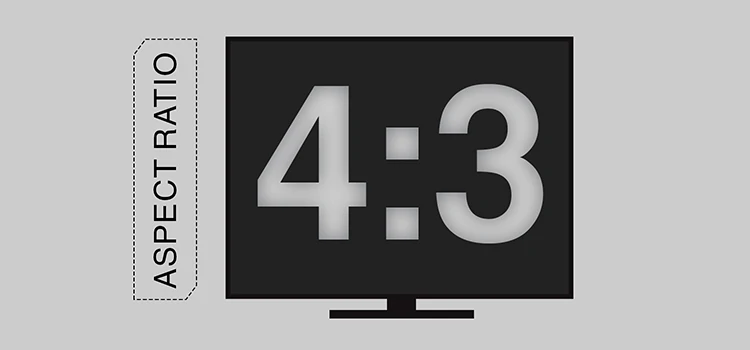Industrial Photography Essentials: Gear, Techniques & Safety Tips

Industrial photography lets us see industries’ hard work, precision, and power up close. It shows massive construction sites, busy manufacturing plants, and high-tech logistics centers in action, giving us a glimpse into the importance of these environments.
Photos shape a company’s image. They highlight expertise, share stories, and help companies stand out. Good-quality photos make or break marketing materials and more.
Use industrial photography to showcase your company’s capabilities, innovation, and expertise. So, what is industrial photography, and why is it so important? This blog will explain it and share tips on capturing great shots that make an impact.
What is Industrial Photography?
Industrial photography shows industries in action. Factories, construction sites, warehouses, oil fields, and power plants are common settings. The goal is to highlight what makes these operations tick—the people, machines, and technology that keep them running.
Industrial photography differs from product photography. Product shots highlight a single item, while industrial photos capture the overall scene. They show things being made, built, moved, or powered, often with workers using heavy machinery and sparks flying.
Industrial photography goes beyond random snapshots. It needs careful planning to capture scale, detail, and emotion in industrial work. Great photos make tough, gritty, and sometimes dangerous jobs appear inspiring, highlighting the true importance of this work.
Industries That Use Industrial Photography
Industrial photography highlights the hardworking side of various businesses. Here’s a look at the key sectors that depend on it:
1. Manufacturing
Industrial photography is essential for factories and production units. It helps manufacturers showcase their skills and impress clients. Photos capture assembly lines, machinery, and finished products. They also serve as a record of complex processes for internal use.
2. Construction
Construction companies take photos to monitor their projects from beginning to end. They shoot pics of workers, equipment, and the construction process. These images help demonstrate their skills, draw in investors, land new deals, and maintain a paper trail.
3. Oil and Gas
The oil and gas industry is based in tough locations like offshore rigs and refineries. It needs strong images for marketing campaigns, corporate reports, and safety training. These pictures show just how big and complex energy production is.
4. Automotive
Car manufacturers and parts suppliers use industrial photography to give people a look at their factories. They show off new technologies and the skill that goes into making each vehicle. You’ll often see pictures of robotic assembly lines, engines being put together, and testing facilities in these photos.
5. Aerospace
Aerospace companies must maintain detailed records of their engineering, strict safety rules, and complex projects like satellites and planes. Industrial photography showcases these precision-made machines for air and space travel. It highlights the innovation involved in their creation.
6. Logistics and Warehousing
Companies in warehousing, freight, and shipping use industrial photography to show their efficiency and reliability. Images of organized storage and transport hubs help build trust with partners and clients.
7. Renewable Energy
Renewable energy projects show commitment to clean energy with striking images. These photos highlight turbine and solar panel size and eco-friendly efforts.
Essential Gear for Industrial Photography
Industrial photography can be tough, so the right gear is a must. You need equipment that’s reliable and can adapt to rough conditions. Here’s what every industrial photographer should have:
- Professional-Grade Camera: You’ll want a DSLR or mirrorless camera that’s built to last and has snappy autofocus. A full-frame sensor is your best bet for getting sharp details in big spaces.
- Versatile Lenses: Wide-angle lenses capture big scenes. Telephoto lenses shoot close-ups from a distance. Fast prime lenses excel in low light.
- Sturdy Tripod: Low lighting is a common issue in many factories. A tripod can be a big help in capturing steady shots without having to crank up the ISO.
- Protective Gear for Equipment: Weatherproof camera covers and lens filters keep dust and dirt out. They also shield your gear from bad weather. Cameras can take a beating at industrial sites, so protection is a must.
- Drones and Action Cameras: Drones show construction sites and warehouses from above. Action cameras capture tight spots and busy areas.
- External Lighting: Portable LED lights light up dark areas and highlight key details when natural light is dim.
Techniques to Capture Powerful Industrial Shots
Capturing strong industrial images takes more than skill. It takes preparation, creativity, and understanding the environment. Here are 9 proven techniques to help.
1. Plan Your Shots Beforehand

Scout the site before taking pictures. Check the action, talk to supervisors, and note the best lighting and safety rules. This planning helps you work efficiently, especially when time or access is limited.
2. Use Wide Angles to Show Scale

Industrial spaces are huge – think big warehouses, tall cranes, and long pipelines. For the best shots, go with a wide-angle lens; anything between 14mm and 35mm is good. This type of lens lets you fit more into the frame, making the scene feel massive and dramatic. Just be aware of distortion in straight lines – unless that’s the effect you’re after.
3. Capture Workers in Action

Machines are cool, but it’s the people behind them who really make things happen. Watch workers in action as they weld, assemble parts, drive forklifts, or inspect equipment. These shots showcase their skills, teamwork, and energy, creating an authentic and emotional scene.
4. Focus on Details Too

Don’t just focus on the big picture. Get close-up shots of gears turning, rough hands gripping tools, and sparks flying from welding. Show the texture of heavy steel beams. These images capture the craftsmanship and dedication in industrial work. Also, mixing detail shots with wider landscape images creates a cool contrast.
5. Use Leading Lines for Impact

Industrial spaces are full of strong lines — pipes, cables, assembly lines, railings. These naturally occurring lines guide the viewer’s eye through the frame. Position yourself so the lines lead toward the subject or into the distance. This adds depth, structure, and a professional feel to your photos.
6. Play with Lighting

Industrial sites often have bold, dramatic lighting — strong overhead lights, glowing furnaces, welding sparks, or natural sunlight cutting through dust. Take advantage of these conditions. Use shadows to create mood, backlight workers to create silhouettes, or add portable LED lights to bring life to dark corners. Good lighting turns ordinary industrial photos into stunning works of art.
7. Shoot from Unusual Angles

Eye-level shots are fine, but they can get boring fast. Crouch down low to make machines look towering and powerful. Find a staircase or platform for a high-angle overview of the worksite. Tilt your camera slightly for dynamic compositions. Unusual angles help viewers see familiar environments in exciting new ways.
8. Freeze Motion or Embrace It

A shutter speed of 1/1000s freezes action in an instant, capturing dramatic moments like flying debris or a welding spark in mid-air. At 1/30s or 1/5s, the blur conveys speed and energy, ideal for scenes like a spinning lathe or a bustling warehouse. Select a shutter speed that tells your story.
9. Edit for a Bold, Real Look

Post-processing brings your images to life. Boost contrast to highlight textures like steel and concrete. Sharpen details to make machinery appear crisp. Slightly desaturate colors for a gritty, industrial mood. Alternatively, enhance blues, oranges, and grays to fit the vibe. Always stay authentic — industrial photography shines when it feels honest and strong, not overly polished or fake.
Safety Tips While Shooting in Industrial Environments
Industrial photography has its risks. You’ve got heavy machinery and moving vehicles that can be hazardous. Throw in electrical systems, and things can get pretty dicey. But no matter what, safety is the top priority.
1. Always Attend a Safety Briefing
Attend a safety meeting before heading to the site. Your supervisor will go over hazards, off-limits areas, and what to do in case of an emergency. This helps make sure the job is done safely and efficiently.
2. Wear the Right Safety Gear
Wear a hard hat, steel-toe boots, and safety goggles on site. You’ll also need a high-visibility vest. Depending on the job, throw in gloves, ear protection, or a mask too. Safety gear is a must.
3. Stay Alert to Your Surroundings
Industrial sites are hazardous. Beware of moving machines and chemicals. Don’t shoot while walking, and avoid distractions in work zones.
4. Work with a Site Escort if Possible
Many sites offer guides or escorts for visitors. If possible, stay with them. They know the safe paths and the right timing. They also know where you can and cannot go. This helps you avoid wandering into dangerous areas.
5. Use Safe Equipment Setup
Set up your tripods, lights, and gear so they don’t block paths or create tripping hazards. Tape down cords, and make sure lights are secure. Keep your setup lean and mobile for quick movement if necessary.
6. Respect No-Entry and Danger Signs
Those signs are there for a reason. Never cross into restricted zones, even if the shot looks tempting. If you need access, ask permission from supervisors first.
7. Be Mindful of Fire Hazards
On sites with welding, fuel, or chemical work, skip flash or specific lights that may spark. Always check if your equipment is safe for that area before you begin shooting.
8. Protect Your Gear from Harsh Conditions
Industrial sites can be dusty, wet, or very hot or cold. Use weather-sealed equipment, lens filters, and protective covers. This keeps your gear safe and helps prevent slips or damage.
9. Have an Emergency Plan
Know the nearest exits, fire extinguishers, and first-aid kits. Keep your phone close. If something goes wrong, tell the nearest supervisor right away. Always put your safety first over getting a shot.
How Industrial Photography Supports Branding & Marketing
Industrial photography goes beyond showing machinery or worksites. It’s a key tool for shaping a company’s brand and enhancing marketing. Here’s how effective industrial photography creates real impact:
1. Building Trust Through Visual Proof
Real images of processes, skilled workers, and impressive facilities show clients that a company values quality and safety. Authentic photos build trust by providing a glimpse into operations. Stock images can’t achieve this.
2. Creating a Strong First Impression
Potential clients notice strong visuals first on a company’s website, brochure, or social media. High-quality industrial photos create a professional tone.
3. Humanizing the Brand
Including workers in action and leadership teams on-site shows the human side of the company. It highlights real people behind the products and services. This makes the brand feel more relatable and trustworthy.
4. Enhancing Case Studies and Client Testimonials
Sharing success stories is crucial for businesses. Using real project photos adds credibility. To enhance case studies and testimonials, add before-and-after pictures. Include project milestones and photos of your team at work.
5. Boosting Recruitment Efforts
Industrial companies often struggle to hire skilled workers. Professional photos can help. They showcase a safe, modern, and innovative work environment. This gives a positive impression and attracts top talent.
Tips for Hiring an Industrial Photographer
Choosing the right industrial photographer matters. They need skill, experience, and the right attitude to capture tough industrial environments. Here are some hiring tips:
1. Look for Relevant Experience
Choose a photographer experienced in industrial settings, such as factories or construction sites. This ensures they know the challenges and safety rules involved.
2. Check Their Portfolio Carefully
Request examples of past work in industrial or corporate settings. Search for images that are powerful, authentic, and detailed. A solid portfolio will demonstrate the photographer’s ability to capture both the scale and the human element of industrial work.
3. Ask About Their Safety Awareness
Safety is critical. A good industrial photographer knows how to work safely. Look for previous safety training or OSHA certifications.
4. Discuss Equipment and Backup Plans
You’ll need high-quality cameras, lenses, and lighting. A photographer should also have backups for when gear fails.
5. Understand Their Approach to Storytelling
Industrial photography goes beyond taking pictures of machines. It tells your company’s story. Talk to the photographer about their approach to visual storytelling. Do they highlight people, processes, scale, or innovation? Ensure their style aligns with your brand’s voice.
6. Talk About Post-Production
Ask how much editing and retouching they do post-shoot. Industrial photos often need color correction, contrast tweaks, and sharpening. However, they should still look natural. Clear communication about editing expectations saves time later.
7. Clarify Usage Rights Upfront
Know your rights to the final images. Can you use them for marketing and other purposes? The photographer should clearly state licensing terms upfront.
8. Set Clear Project Expectations
Before starting, talk about the project goals. Discuss how many shots you need and the key moments to capture. Set deadlines and outline any safety requirements. A clear plan helps the photographer understand your expectations and meet them.
To Conclude: The Art in the Industry
Industrial photography is about capturing the energy and innovation behind industries. It tells the story of people, technology, and processes that make modern life possible.
Powerful industrial images leave a lasting impact, helping companies build trust and connect with their audience. In a world where visuals matter most, professional industrial photography is essential. Great photos celebrate a company’s identity and success.
Tell your story through bold and authentic images and see how it transforms your industry’s image.







